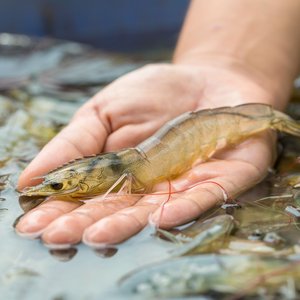Trouble in Paradise (the Fishy Kind) as Introduced Tilapia Dine on Native Fish Fry
The poster child for sustainable fish farming—the tilapia—is actually a problematic invasive species for the native fish of the islands of Fiji, according to a new study by the Wildlife Conservation Society and other groups.
Scientists suspect that tilapia introduced to the waterways of the Fiji Islands may be gobbling up the larvae and juvenile fish of several native species of goby, fish that live in both fresh and salt water and begin their lives in island streams.
The recently published paper appears in Aquatic Conservation: Marine and Freshwater Ecosystems. The authors include: Stacy Jupiter and Ingrid Qauqau of the Wildlife Conservation Society; Aaron P. Jenkins of Wetlands International-Oceania; and James Atherton of Conservation International.
“Many of the unique freshwater fishes of the Fiji Islands are being threatened by introduced tilapia and other forms of development in key water catchment basins,” said Dr. Jupiter, a co-author of the study and one of the investigators examining the effects of human activities on the native fauna. “Conserving the native fishes of the islands will require a multi-faceted collaboration that protects not only the waterways of the islands, but the ecosystems that contain them.”
The most surprising finding of the study centers on the tilapia, a member of the cichlid family of fishes from Africa that has become one of the most important kinds of fish for aquaculture, due in large part to its rapid rate of growth and palatability. Aside from its value as a source of protein, the tilapia is sometimes problematic to native fish species in tropical locations.
To gauge the impacts of tilapia and other human activities on native fish species in the Fiji Archipelago, researchers surveyed the fish species and other denizens of 20 river basins on the major islands of Vitu Levu, Vanua Levu, and Taveuni. In addition to catching and identifying fishes with gill and seine nets, the scientists also rated other environmental factors such as: the potential of erosion due to loss of forest cover and riparian vegetation; road density near rivers and streams; the distances and complexity of nearby mangroves and reefs; and the presence or absence of invasive species (tilapia mainly).
The team found that streams with tilapia contained 11 fewer species of native fishes than those without; species most sensitive to introduced tilapia included the throat-spine gudgeon, the olive flathead-gudgeon, and other gobies. In general, sites where tilapia were absent had more species of native fish.
Since tilapia are known to consume the larvae and juvenile fish, the researchers assume that the introduced species may be consuming the native ones as they make their way upstream and down. Absence of forest cover adjacent to streams was also correlated to fewer fish species.
Based on the spatial information compiled in the study, the researchers found that remote and undeveloped regions—with waterways containing a full complement of native species and no tilapia—on the three islands should be considered priority locations for management. The main management activities, the authors recommend, should include conserving forests around waterways and keeping the tilapia out.
“Protecting marine and aquatic biodiversity takes more than managing isolated rivers or coral reefs,” said Dr. Caleb McClennen, Director of the Wildlife Conservation Society’s Marine Program. “A holistic conservation approach is needed, one that incorporates freshwater systems, the surrounding forest cover, coastal estuaries and seaward coral reefs. As aquaculture continues to develop worldwide, best practices must include precautionary measures to keep farmed species out of the surrounding natural environment.”










